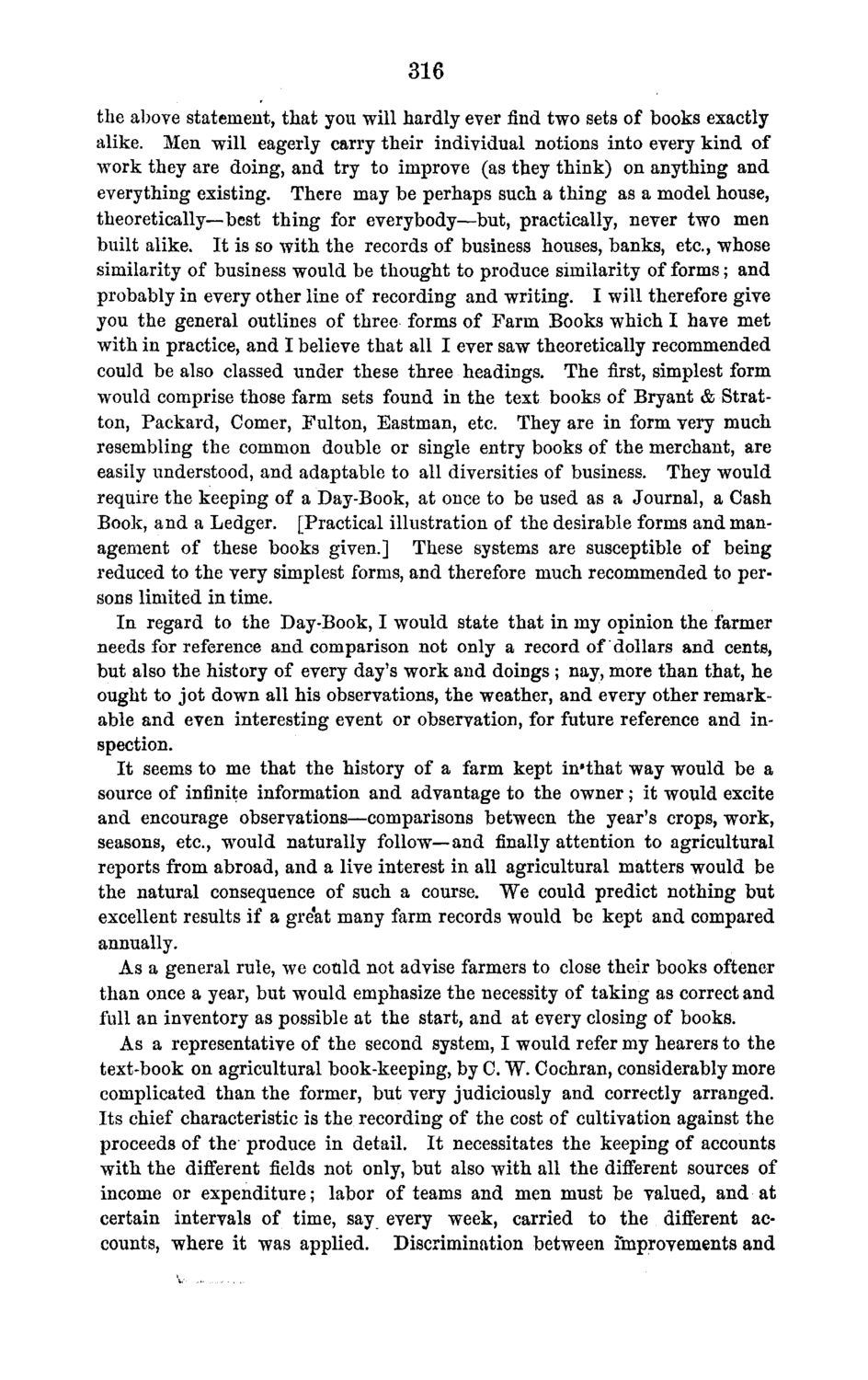| |
| |
Caption: Board of Trustees Minutes - 1870
This is a reduced-resolution page image for fast online browsing.

EXTRACTED TEXT FROM PAGE:
316 the above statement, that you will hardly ever find two sets of books exactly alike. Men will eagerly carry their individual notions into every kind of work they are doing, and try to improve (as they think) on anything and everything existing. There may be perhaps such a thing as a model house, theoretically—best thing for everybody—but, practically, never two men built alike. It is so with the records of business houses, banks, etc., whose similarity of business would be thought to produce similarity of forms; and probably in every other line of recording and writing. I will therefore give you the general outlines of three forms of Farm Books which I have met with in practice, and I believe that all I ever saw theoretically recommended could be also classed under these three headings. The first, simplest form would comprise those farm sets found in the text books of Bryant & Stratton, Packard, Comer, Fulton, Eastman, etc. They are in form very much resembling the common double or single entry books of the merchant, are easily understood, and adaptable to all diversities of business. They would require the keeping of a Day-Book, at once to be used as a Journal, a Cash Book, and a Ledger. [Practical illustration of the desirable forms and management of these books given.] These systems are susceptible of being reduced to the very simplest forms, and therefore much recommended to persons limited in time. In regard to the Day-Book, I would state that in my opinion the farmer needs for reference and comparison not only a record of dollars and cents, but also the history of every day's work and doings ; nay, more than that, he ought to jot down all his observations, the weather, and every other remarkable and even interesting event or observation, for future reference and inspection. It seems to me that the history of a farm kept in'that way would be a source of infinite information and advantage to the owner; it would excite and encourage observations—comparisons between the year's crops, work, seasons, etc., would naturally follow—and finally attention to agricultural reports from abroad, and a live interest in all agricultural matters would be the natural consequence of such a course. We could predict nothing but excellent results if a great many farm records would be kept and compared annually. As a general rule, we could not advise farmers to close their books oftener than once a year, but would emphasize the necessity of taking as correct and full an inventory as possible at the start, and at every closing of books. As a representative of the second system, I would refer my hearers to the text-book on agricultural book-keeping, by C. W. Cochran, considerably more complicated than the former, but very judiciously and correctly arranged. Its chief characteristic is the recording of the cost of cultivation against the proceeds of the produce in detail. It necessitates the keeping of accounts with the different fields not only, but also with all the different sources of income or expenditure; labor of teams and men must be valued, and at certain intervals of time, say every week, carried to the different accounts, where it was applied. Discrimination between fmprovements and
| |